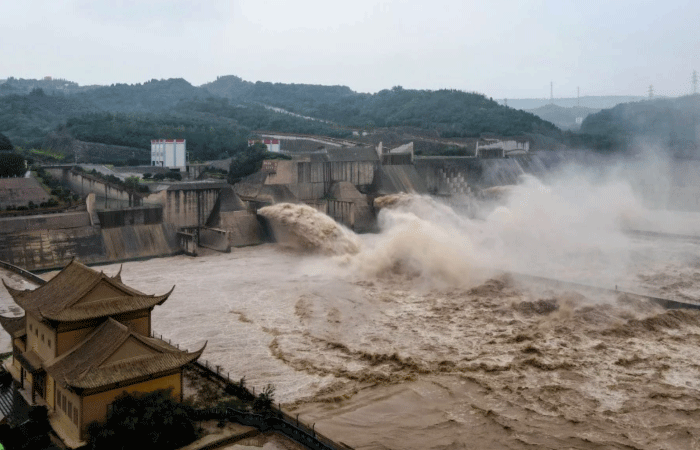Severe flooding because of monsoon rain has led to the displacement of around 4 million people in India’s northeastern state of Assam and Nepal. The death toll has now reached at least 189, according to government data. The main reason for the flooding is an overflowing Brahmaputra river.
In Assam, 85 people were killed as a result of flooding with 70 lakh people affected. Assam is battling floods for the third time in two months with over 54 lakh people affected so far. The floods have affected Assam’s wildlife. More than 100 animals, including at least eight rhinos have been killed.
The MET department has issued a red alert warning in Assam and its surrounding states, such as West Bengal, Meghalaya, Arunachal Pradesh, Nagaland. This warning is an indication for disaster control authorities to prepare for flooding or landslides.
Neighbouring Bangladesh is also grappling with floods, which have killed at least 21 people and affected 26 lakh people. The UN has estimated that half of the country will be affected by incessant flooding in the days to come.
China has also upped its flood level alert in the Huai River region after several days of incessant rain. Areas around the Yangtze river and Lake Tai have also declared flood alerts. Authorities blasted a dam on a Yangtze river tributary using explosives to ease the flooding. Flash floods in Sulawesi, Indonesia. have displaced more than 14,000 people and 67 people have been reported missing.
World inching closer towards 1.5°C warming limit
There is a 24% chance that one of the next five years will be at least 1.5°C warmer than pre-industrial levels, according to the World Meteorological Department’s Global Annual to Decadal Climate Update. Although the chances seem slim now, the percentage is only going to rise. In other words, while we are not there yet, we are getting quite close to the limit set in the Paris Agreement.
Globally, surface air temperatures for the month of June this year were 0.53°C warmer than the average June from 1981-2010. The Siberian Arctic recorded the most above-average temperatures.
Oil & gas drilling in US, agriculture across world pushing up methane emissions: Studies
Two recent studies have shown there are two reasons why global methane levels are rising exponentially – oil and gas drilling along with agricultural production across the globe. This is significant because up until the 2000s, methane output from human activity was mainly attributed to coal mines. The studies – published in the journals Earth System Science Data and Environmental Research Letter – measured the emissions using ground and satellite images as well as following consumption and production trends. Between 2000 and 2017, the only region where methane emissions reported a drop was Europe.
About The Author
You may also like
Rise in Fossil Fuel Burning is Making Floods Lethal in Asia
Climate Governance Shows Progress, But Gaps Still Remain 10 yrs After Paris Agreement: Report
A Fifth of Migratory Species Face Extinction from Climate Change: Report
Climate change, unplanned construction and a malfunctioning dam can worsen the flooding in north Bengal
Can Private Players Reinvent India’s Forecasting Future?

